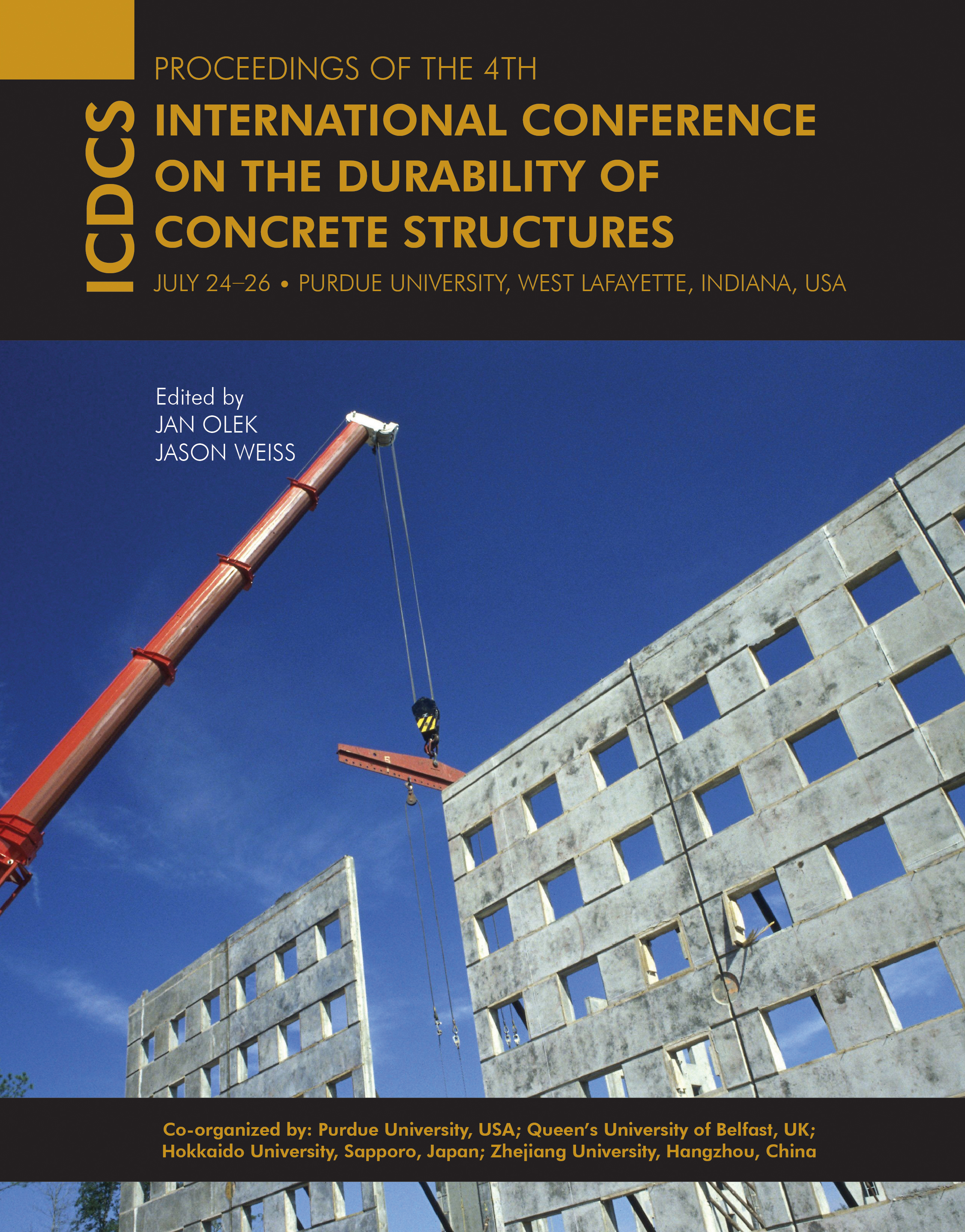Keywords
cement, heavy metal, chlorides, adsorption, desorption, leaching
Abstract
After the demolition of concrete structures, it is expected to recycle the whole of the demolished concrete. As of now, however, it is difficult to recycle the fine powders generated in the processes of demolition of concrete and manufacture of recycled aggregate because these powders may contain heavy metals exceeding the soil environmental standard, and such powders are disposed finally. It is well known that heavy metals are easily adsorbed on cement hydrates. To promote the total recycling of demolished concrete, it is important to remove adsorbed heavy metals from the fine powders easily. This article tried to gain a foothold in an effective method to separate heavy metals from cement hydrates easily. In this article, adsorption and desorption tests and a tank test was performed to investigate the desorption property as well as the leaching properties of heavy metals from cement hydrates in various chloride solutions. In this test, Pb was focused on as a heavy metal because relatively high amount of Pb is contained in recycled aggregates. Cement pastes containing Pb were prepared by adding 1% Pb(NO3)2 relative to cement by mass. About 20 mass% of potassium chloride, sodium chloride, and calcium chloride solutions were used as chloride solutions. The leachant solution was totally changed at certain periods, and the concentration of Pb in the collected leachant solution was measured. As a result, when cement pastes containing Pb were immersed in calcium chloride solution, a large number of Pb were leached out of cement pastes, while the leaching ratio of Pb in the specimen was less than 1% and almost the same for specimens immersed in deionized water, potassium chloride solution, and sodium chloride solution. From the results of desorption tests carried out in parallel, it is considered that the increase in Pb desorption caused the increase in Pb leaching from cube specimens. The leaching properties of Pb ions in chloride solutions could be influenced by the type of cation. These results show that the immersion of demolished concrete in calcium chloride solution may be used as an easy separation method of heavy metals from concrete.
DOI
10.5703/1288284315405
Included in
Heavy Metal Desorption From Cement Hydrates Caused by Chloride Solutions
After the demolition of concrete structures, it is expected to recycle the whole of the demolished concrete. As of now, however, it is difficult to recycle the fine powders generated in the processes of demolition of concrete and manufacture of recycled aggregate because these powders may contain heavy metals exceeding the soil environmental standard, and such powders are disposed finally. It is well known that heavy metals are easily adsorbed on cement hydrates. To promote the total recycling of demolished concrete, it is important to remove adsorbed heavy metals from the fine powders easily. This article tried to gain a foothold in an effective method to separate heavy metals from cement hydrates easily. In this article, adsorption and desorption tests and a tank test was performed to investigate the desorption property as well as the leaching properties of heavy metals from cement hydrates in various chloride solutions. In this test, Pb was focused on as a heavy metal because relatively high amount of Pb is contained in recycled aggregates. Cement pastes containing Pb were prepared by adding 1% Pb(NO3)2 relative to cement by mass. About 20 mass% of potassium chloride, sodium chloride, and calcium chloride solutions were used as chloride solutions. The leachant solution was totally changed at certain periods, and the concentration of Pb in the collected leachant solution was measured. As a result, when cement pastes containing Pb were immersed in calcium chloride solution, a large number of Pb were leached out of cement pastes, while the leaching ratio of Pb in the specimen was less than 1% and almost the same for specimens immersed in deionized water, potassium chloride solution, and sodium chloride solution. From the results of desorption tests carried out in parallel, it is considered that the increase in Pb desorption caused the increase in Pb leaching from cube specimens. The leaching properties of Pb ions in chloride solutions could be influenced by the type of cation. These results show that the immersion of demolished concrete in calcium chloride solution may be used as an easy separation method of heavy metals from concrete.





